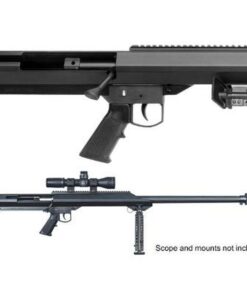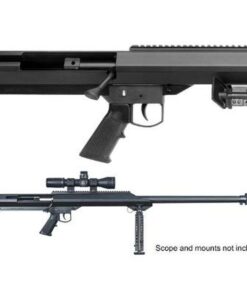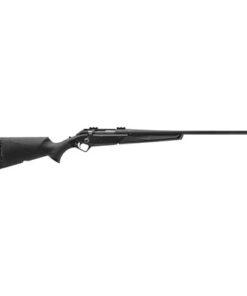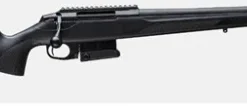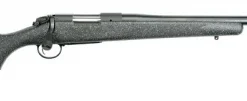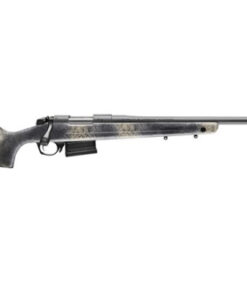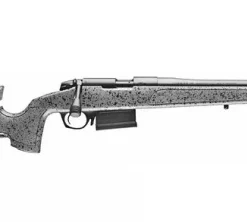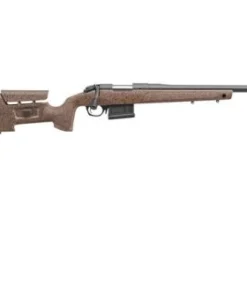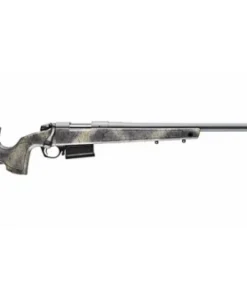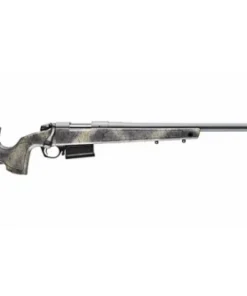Subtotal: $679.99
Buy Rifles for sale online.
Rifles for sale. A rifle is a long-barreled firearm having a helical pattern of grooves (rifling) carved into the bore wall, ideal for precision firing.
Rifles are often intended to be held with both hands and supported firmly on the shooter’s shoulder through a buttstock for stability when firing, in line with their focus on accuracy. Buy Rifles for sale online
Rifles are widely employed in combat, self-defense, law enforcement, criminal activity (particularly assassinations), hunting, and shooting sports. Rifles for sale, Buy Rifles for sale, Rifles for sale USA.
Buy Rifles for sale online
Beretta Tikka T3X CTR 6.5 CRD 20 | Buy Beretta Tikka T3X CTR 6.5 CRD 20 online
Buy Rifles for sale online
BERGARA B14 .22 LR ED STL 18″ 10RD | Order BERGARA B14 .22 LR ED STL 18″ 10RD online
Buy Rifles for sale online
Bergara B14 Terrain Wilderness .308 Win 20″ Cerakote Gray Woodland Camo
Buy Rifles for sale online
Bergara B14R .22LR 18 Steel | Bergara B14R .22LR 18 Steel for sale
Buy Rifles for sale online
BERGARA HMR Left Hand 6.5 CRD | Buy BERGARA HMR Left Hand 6.5 CRD online
Buy Rifles for sale online
Bergara HMR WILDERNESS 6.5CR GRAY 24 | Cheap Bergara HMR WILDERNESS 6.5CR GRAY 24
Rifles for sale online.
Buy Rifles for sale online. Originally, the phrase rifled gun referred to the early modern machining method of making groovings using cutting tools, with the verb rifle related to the verb rifle.
By the twentieth century, the weapon had grown so popular that the term "rifle" had evolved to mean any long-shaped portable ranged weapon with a trigger enabling well-aimed fire (e.g., personnel halting and stimulation response rifle, which is a laser dazzler).
The projectile (bullet) of a rifle is propelled by the contained deflagration of a combustible propellant compound (originally black powder, later cordite, and now nitrocellulose), though air rifles, which are popular for vermin control, small game hunting, competitive target shooting, and casual sport shooting, use other propulsive means such as compressed air (plinking).
The rifling within a rifle's gun barrel is what distinguishes it from preceding smoothbore long weapons (e.g., arquebuses, muskets).
Lands are elevated portions of a barrel's rifling that make contact with the projectile and impose torque on it as it passes down the bore, spinning it about its longitudinal axis. Buy Rifles for sale online
When the bullet exits the barrel, the spin remains and provides gyroscopic stability to the projectile owing to angular momentum conservation, preventing yawing and tumbling in flight.
This allows for the employment of longer, more aerodynamic bullets (as opposed to the spherical balls used in smoothbore muskets), which enhances range and accuracy.
Terminology of rifles for sale
Historically, each pull of the trigger of a rifle only released a single shot. Single shot, bolt action, semi-automatic, and automatic rifles are the most prevalent types of modern rifles. Because of their designs, single shot, bolt action, and semi-automatic rifles can only fire one shot every trigger pull. Only automatic weapons can fire more than one bullet every trigger pull; however, some automatic rifles have preset bursts of two, three, or more shots per squeeze.Machine guns and modern automatic rifles have some design and function overlap. Many light machine guns (like the Russian RPK) are modifications of existing automatic rifle designs.
Light machine guns in the military are usually chambered for the same caliber ammunition as service rifles.
The weight, cooling system, and ammo feed mechanism are the main differences between an automated rifle and a machine gun.
Rifles, unlike machine guns, are incapable of continuous automatic firing due to their lighter components (which overheat fast) and lower capacity magazines; they sacrifice this capability for better mobility.
Magazines are used to feed modern military rifles, although machine guns are usually belt-fed. To avoid overheating, several machine guns enable the user to swiftly swap barrels, whereas rifles do not.
To avoid the risk of "cook-off," most machine guns have an open bolt, but practically all rifles have a closed bolt for accuracy. Machine guns are frequently manned by many soldiers, whereas a rifle is a single weapon.
Larger rifled crew-served weapons firing explosive shells, such as recoilless rifles and naval rifles, are also referred to as "rifles."
Even if the weapon is not rifled, a rifle is referred to in many works of fiction as any weapon with stock and is shouldered before firing or does not fire solid projectiles (e.g., a "laser rifle").
Historical overview of Rifles online.
Rifling's beginnings are obscure, however, some of the first practical trials appear to have taken place in Europe during the 15th century. Archers have long known that adding a twist to the tail feathers of their arrows improved accuracy.
Early muskets created a lot of smoke and soot, which had to be cleaned out of the action and bore of the musket regularly, either by bore cleaning or by a purposeful attempt to create "soot grooves" that would allow the firearm to fire more bullets.
Although no one knows for sure, this might have resulted in an apparent improvement in inaccuracy. Many believe the grooved cannon barrel was conceived around 1440 and further refined by Gaspard Kollner of Vienna, Austria, around 1498.
The spirally grooved cannon barrel is thought to have been created in Germany by Augustus Kotter of Nuremberg in 1520. Because rifles were more prone to issues owing to powder clogging the barrel and required longer to reload and fire than muskets, military leaders favored smooth bore weapons for infantry use.
Smoothbore muskets were improved upon by the invention of rifles. Benjamin Robins, an English mathematician, understood in the early 18th century that an extended bullet would preserve the velocity and kinetic energy of a musket ball while cutting through the air with more ease.
Early muzzle-loading rifles' black powder clogged the barrel fast, making loading slower and more difficult. Because the smoke from black powder soon clouded the battlefield and made it nearly hard to aim the weapon from a distance, the rifle's longer-range was thought to be of little practical value.
Because musketeers couldn't afford to pause in the middle of a fight to clean their barrels, rifles were invented limited to use by sharpshooters and non-military uses like hunting.
Muskets were smoothbore firearms with a high caliber and spherical ammunition discharged at a low velocity. The musket ball was a loose fit in the barrel due to the high cost and difficulties of accurate manufacture and the requirement to load quickly from the muzzle.
As a result, when the ball was shot, it bounced off the walls of the barrel and exited the muzzle in an unanticipated trajectory.
The long rifle's balls were smaller, allowing more rounds to be produced for a given amount of lead. These rifles also featured larger barrels with helical grooves, which allowed for greater accuracy.
These initially appeared around 1740, with Jacob Dickert, a German immigrant, being one of the first to do so. There were many such firms in the region by 1850.
The longer barrel was a break from local gunsmiths' German traditions, allowing bullets to travel faster before exiting from the barrel (due to the burning gunpowder being trapped for longer).
Instead of using the musket for inaccurate fire, the rifle was employed for precision shooting, pointing, and firing at particular targets.
These rifles were widely used by frontiersmen by the time of the American Revolutionary War, and Congress approved the formation of 10 rifle companies.
Morgan's Riflemen, headed by Daniel Morgan, were one of the most significant troops. This sharpshooting regiment would go on to play a key role at the Battle of Saratoga, as well as in the southern states under General Morgan's leadership.
Morgan's sharpshooters used the rifle's better precision to pick down cannoneers and officers, limiting the impact of opposing artillery. Many wars, including the battles of Cowpens, Saratoga, and King's Mountain, relied on this sort of advantage.
The British 95th Regiment (Green Jackets) and 60th Regiment (Royal American), as well as sharpshooters and riflemen during the War of 1812, employed the rifle to great advantage during skirmishing. They were not accepted by the entire army due to their slower loading time than muskets.
Long length was not necessary to circumvent the forward line since rifles were employed by sharpshooters who did not commonly fire over other men's shoulders.
Shorter barrels provided for a more maneuverable weapon, since tight-fitting balls didn't have to be shoved as far down the barrel.
The advent of mini balls in the 1840s solved the problem of sluggish loading, and rifles swiftly supplanted muskets on the battlefield in the 1850s and 1860s.
Many rifles, sometimes known as rifled muskets, were remarkably similar to the muskets they replaced, but the military experimented with different designs as well.
Military forces abandoned muzzleloaders in favor of breech-loading designs in the late 1860s since breech-loading guns proved to have a considerably higher rate of fire than muzzleloaders.
Rifles were primarily single-shot, breech-loading weapons in the late 1800s, meant for directed, discretionary fire by individual troops.
Rifles had a fixed or folding stock to brace against the shoulder when shooting, same as they do now.
In the nineteenth century, the adoption of cartridges and breech-loading coincided with the widespread acceptance of rifles. Soldiers were trained to fire accurately across great distances with high-powered ammunition in the early twentieth century.
Long-range 'volley sights' were fitted to Lee–Enfield rifles during WWI, allowing mass shooting at ranges of up to 1.6 km (1 mi). Individual bullets were rare to strike, but a platoon shooting frequently may create a "beaten ground" effect comparable to that of light artillery or machine guns.
Except for bird hunting, rifles are currently the most popular hunting firearm.
The nineteenth century
(left) Jean Lepage's "Premier Consul" type flintlock carbine, named after the First Consul Napoléon Bonaparte, about 1800; (right) the Lepage carbine's rifling.
The British army established many experimental regiments known as "Rifles" during the Napoleonic Wars, armed with the Baker rifle.
Due to their precision and long-range, these Rifle Regiments were more successful as skirmishers in Spain and Portugal during the Peninsular War than skirmishers armed with muskets.
Rifles with cylindrical barrels carved with helical grooves gradually evolved, featuring "lands" between the grooves. Because it was not practicable to force an overbore bullet down a rifled barrel, the innovation was quickly followed by the widespread adoption of breech-loading firearms.
Prior rounds forced dirt and filth down ahead of a tight bullet or ball (which may have been a looser fit in the clean barrel before the first shot), and loading was significantly more difficult since the lead had to be bent to go down in the first place, lowering accuracy due to deformation.
Several techniques were explored to solve the problem, the most common of which was to use an under-bore bullet that expanded when fired.
The original muzzle-loading rifle, which had a close-fitting ball to accept the rifling grooves, was difficult to load, especially when foul, and was hence not widely utilized in military applications.
The bullet itself did not change when rifling was introduced; instead, it was covered in a greased fabric patch to grasp the rifling grooves.
The form and purpose of the bullet changed dramatically throughout the first half of the nineteenth century. Delvigne, a French military commander, designed a breech with abrupt shoulders on which a spherical bullet could be driven until it caught in the rifling grooves in 1826.
Delvigne's approach, on the other hand, caused the bullet to distort and was ineffective.
Soon after, Louis-Etienne de Thouvenin designed the Carabine à tige, which had a stem at the bottom of the barrel that deformed and expanded the base of the bullet when pushed, allowing precise contact with the rifling.
The region surrounding the stem, on the other hand, quickly blocked and became filthy.
Minié system — the British-made Minié rifle,
sometimes known as the "rifled musket," was employed in Japan during the Boshin War (1868–1869).
One of the most notable was the Minié method, which depended on a conical bullet (known as a Minié ball) with a hollow skirt at the base of the bullet and was designed by French Army Captain Claude-Étienne Minié.
When the bullet was shot, the skirt expanded due to the pressure of the bursting charge and gripped the rifling. Because less gas leaked beyond the bullet with a stronger seal, the bullet had more power
.A long bullet was also heavier than a spherical ball of the same bore (caliber) diameter. The greater grip also allowed the bullet to spin more consistently, increasing the range from around 50 yards for a smooth bore to nearly 100 yards.
The expanding skirt of the Minié ball also solved the problem of black powder residue fouling the inside of the barrel, making tight-fitting bullets difficult to load.
Conical bullets could be loaded into rifles just as rapidly as round balls in smoothbores thanks to the Minié method, allowing rifle muskets to take the place of muskets on the battlefield.
Due to their increased power and precision, Minié system rifles, such as the U.S. Springfield and the British Enfield of the early 1860s, played an important role in the American Civil War.
Bullet design changed during the nineteenth century, with projectiles becoming smaller and lighter. By 1910, the blunt-nosed bullet had been phased out in favor of the pointed, spitzer bullet, which offered improved range and penetration.
Cartridge design progressed from basic paper tubes carrying black powder and shot to sealed brass casings with inbuilt primers for ignition, and black powder was replaced with cordite, then various nitrocellulose-based smokeless powder mixes, propelling bullets to higher velocities than previously.
As a result of the higher velocity, bullets were changed from soft lead to tougher lead, then copper-jacketed, to better engage the spiral grooves without "stripping" them in the same manner that a screw or bolt thread would be stripped if it were stripped.
Breech-loading
The Chassepot's loading mechanism
Breech-loading rifles were first developed in 1836 with the German Dreyse Needle gun, followed by the French Tabatière in 1857, the British Calisher, and Terry carbine built in Birmingham in 1857, and the better-known British Snider–Enfield carbine in 1864.
Bolt-action systems quickly supplanted primitive chamber-locking devices, as shown by the Chassepot in 1866.
Breech-loading rifles can shoot at a pace several times faster than muzzle-loading rifles, and they can also be loaded from a prone rather than a standing posture, which has a considerable influence on combat.
It is more accurate to fire from a prone (i.e., lying down) position than from a standing one because a prone rifleman provides a far smaller target than a standing soldier.
The increased precision and range, paired with lower susceptibility, aided the defense in general, rendering the classic infantry fight between standing and volleying infantry lines obsolete.
A rifle that revolves around Carbine Colt Model 1855
Revolving rifles were an effort to enhance the rate of fire of rifles by merging them with the revolving firing mechanism invented for revolving pistols previously.
In the early nineteenth century, Colt began experimenting with rotating rifles, and other manufacturers like Remington followed suit. The Colt Revolving Rifle Model 1855 was an early repeating weapon that saw little combat during the American Civil War.
It was the first repeating rifle to be employed by the US government. Revolvers, both rifles, and pistols tend to spray metal shards from the cylinder's front.
The Winchester repeating rifle was created in the mid-nineteenth century. To reload the gun with a stored cartridge, the firer pressed a lever.
Storage of cartridges
The way cartridges were stored and utilized in the weapon was a major area of research. The United States adopted the Spencer repeating rifle, a breech-loading, manually powered lever-action rifle. During the American Civil War, about 20,000 were used.
It was the first time an infantry rifle with a detachable magazine was used. Christopher Spencer finished the design in 1860.
It employed copper rimfire cartridges that were housed in a seven-round tube magazine that could be removed and fired one after the other. The magazine could be switched for another once it was empty.
The twentieth century
Military observers from Europe and the United States watched significant combat fought using high-velocity bolt-action rifles shooting smokeless powder during the Russo-Japanese War of 1904–1905.: 179, 229, 230 :
104, 105 Nearly 343,000 Russian forces battled against approximately 281,000 Japanese troops in the Battle of Mukden in 1905.
The Russian Mosin–Nagant Model 1891 bolt-action rifle in 7.62mm was challenged against the Japanese Arisaka Type 30 bolt-action rifle in 6.5mm; both possessed speeds much beyond the 19th-century black powder velocity of under 2,000 feet per second (610 m/s).
Rifles were typically quite long until the late nineteenth century, with some reaching 2 m (6 ft) in length to optimize accuracy, rendering early rifles impracticable for use by cavalry.
With the introduction of more potent smokeless powder, however, a shorter barrel did not have as much of an impact on accuracy. As a result, cavalry saw only sporadic but notable use in twentieth-century battles.
The development of the machine gun, submachine gun, and rifled artillery, with their massed, fast firepower, outpaced the development of any technique to attack a trench defended by riflemen and machine gunners.
Perhaps the greatest validation and vilification of the rifle as a combat weapon was the bloodshed of World War I.
The M1 Garand was a World War II semi-automatic rapid-fire rifle designed for contemporary combat.
Model 700 Remington rifle in.30-06 Springfield caliber with silencer and attached telescopic sight.
During and after WWII, it was widely believed that most infantry battles took place at distances of less than 300 meters; the range and power of huge full-power rifle rounds were "overkill," necessitating the use of weapons that were heavier than necessary.
Germany developed the 7.92mm Kurz (short) round, the MKb-42, and eventually the assault rifle as a result of this.
An infantryman's weapon is now designed at ranges of 300 meters or fewer, and troops are taught to fire single bullets or bursts of fire at these distances.
In most cases, accurate, long-range firing is the realm of marksmen and snipers in combat, and devoted target shooters in civilian life. At 100 yards, most contemporary marksman rifles and sniper rifles can achieve accuracy of greater than 0.3 mrad (1 arcminute).
Rifle made from 3D printing
The Grizzly is a.22-caliber rifle that was 3D printed in August of 2013. A Stratasys Dimension 1200es printer was used to make it. It was made by a Canadian only known as "Matthew," who told The Verge that he was in his late 20s and that his main profession was building construction tools.
Before breaking, the original Grizzly fired a single shot. Grizzly 2.0 fired fourteen shots before succumbing to the strain.
Another 3D-printed 9mm rifle known as the "FGC-9mm" was manufactured in October 2020. It is said to be possible to make it in two weeks with only $500 in tools. In April 2021, a second model was created.
Rifle for kids
A youth rifle is a rifle that has been developed or adapted to accommodate youngsters or shooters with tiny frames. A single-shot rifle is common among juvenile rifles.
Although some juvenile weapons are semi-automatic, a 22 caliber rifle or a bolt-action rifle is recommended. They are generally quite light and have a very low pull length, which is required to accommodate youngsters.
Many popular rifles, such as the Ruger 10/22, a semi-automatic, have youth stocks available. By simply replacing the stock of a normal rifle, a youth rifle may be built from it. The average age of shooters with such weapons is around 5 years old.
Rifling's technical characteristics
Helical grooves in a round bore were the most common type of rifling.
The barrels of several early rifled weapons featured twisted polygonal bores. The Whitworth rifle was the first of its kind, with the round spinning for precision.
Bullets for these firearms were designed to fit the form of the bore, allowing the bullet to grasp the rifle barrel and spin.
Even though these were primarily big caliber firearms, the ammunition did not fit snugly in the barrel. The experimental designs featured a variety of spiral forms and degrees of spiraling.
The Metford rifling of the Pattern 1888 Lee–Metford army rifle was one extensively manufactured type. Polygonal rifling is still employed in select weapons today, such as the Glock handguns, despite its rarity (which fire standard bullets).
Many of the early designs were prone to dangerous backfiring, which might result in the weapon being destroyed and the person firing it being seriously injured.
Wearing a barrel
As the bullet enters the barrel, it embeds itself in the rifling, progressively wearing down the barrel and increasing the rate at which it heats up.
As a result, some machine guns had quick-change barrels that can be replaced every few thousand rounds or were water-cooled in older designs.
Unlike previous carbon steel barrels, which could only fire around 1,000 rounds before the intense heat caused accuracy to deteriorate, current stainless steel barrels for target rifles are significantly more resistant to wear, enabling thousands of rounds to be fired before accuracy deteriorates.
(To minimize wear and improve corrosion resistance, many shotguns and small weapons have chrome-lined barrels.)
Because the plating process is complex and might impair the impact of the rifling, this is uncommon on rifles built for great accuracy.) Modern ammunition has a hardened lead core with a softer outer cladding or jacket, which is often made of a copper-nickel alloy.
To further minimize internal friction, some ammunition is coated with molybdenum disulfide — the so-called moly-coated' bullet.
The rate of firing is
Rifles were originally muzzle-loading, single-shot weapons. Breech-loading guns were developed in the 18th century to allow riflemen to reload while hiding, but manufacturing flaws and the difficulties of producing a dependable gas-tight seal precluded widespread use.
Multi-shot repeating rifles with lever, pump, or linear bolt actions were popular in the nineteenth century, increasing the rate of fire and reducing the hassle of loading a firearm.
Brass cartridge casings, which expanded in an elastic form at the time of fire and successfully sealed the breech while the pressure was high, then relaxed back enough to allow for simple removal, addressed the problem of appropriate seal creation.
The leading bolt-action design by the end of the nineteenth century was that of Paul Mauser, whose action—wed to a dependable design with a five-shot magazine—became a world standard through two world wars and beyond.
Britain's ten-shot Lee–Enfield and America's 1903 Springfield Rifle versions were similar to the Mauser rifle. Mauser's initial design was closely replicated by the American M1903.
The musket's range and accuracy were greatly improved by barrel rifling. The rifle's history has been distinguished by advances in range and accuracy throughout its evolution.
The rifle has been increasingly effective at long-range strikes since the Minié rifle and beyond.
Large-caliber anti-material guns, generally firing 12.7 mm to 20 mm caliber bullets, have been created in recent decades.
The most well-known of these rifles is the Barrett M82A1 from the United States. Accuracy International's AX50 is a second example.
These weapons are most commonly employed to hit key, susceptible targets including computerized command and control vehicles, radio trucks, radar antennas, vehicle engine blocks, and enemy aircraft jet engines.
Anti-material rifles can be used against humans, but the heavier rifle and ammo, as well as the huge recoil and muzzle blast, render them unsuitable for this use.
Although it has a proven kill distance of 2,430 m (1.51 mi) in Afghanistan during Operation Anaconda in 2002, the Barrett M82 is built with a maximum effective range of 1,800 m (1.1 mi).
An unknown soldier of Canada's elite special operations unit Joint Task Force 1 established the record for the longest verified kill shot at 3,540 meters (11,610 feet).
Bullets fired from a rifled barrel may spin at speeds of over 100,000 revolutions per minute (rpm) (or 1.67 kilohertz, as 1 RPM = 1/60 Hz).
The rotational speed is determined by the bullet's muzzle velocity as well as the rifling pitch.
Excessive rotational speed can cause the bullet to exceed its design limitations, while insufficient centripetal force will cause the bullet to disintegrate radially.
The bullet's rotational speed may be determined using the formula below.
- MV / twist rate = rotational speed
Using metric units, the formula divides the number of millimeters in a meter (1000) by the barrel twist in millimeters (the length of travel along the barrel per full rotation). This number is then multiplied by the muzzle velocity in meters per second (m/s) and the number of seconds in a minute (60).
- MV (in m/s) × (1000 mm /twist) × 60 s/min = Bullet RPM
For example, using a barrel that has a twist rate of 190 mm with a muzzle velocity of 900 m/s:
- 900 m/s × (1000 mm /(190 mm)) × 60 s/min = 284 210 RPM
This number is multiplied by the muzzle velocity (MV) and the number of seconds in a minute (60). For example, a bullet with a muzzle velocity of 3,000 feet per second (910 m/s) leaving a barrel that twists once per foot (1/12") would rotate at 180,000rpm.
- MV (in fps) × (12 in. /twist rate) × 60 s/min. = Bullet RPM
- 3000 fps × (12"/(8"/rotation)) × 60 s/min. = 270,000 RPM
Caliber
Rifles can be chambered in a range of calibers (bullet or barrel diameters), ranging from 4.4 mm (.17 inch) for varmint weapons to 20 mm (.80 caliber) for the biggest anti-tank rifles.
The breadth of the bullet discharged through the barrel of a rifle is referred to as caliber. Armed forces have long sought for and procured the most devastating and accurate caliber for their weapons.
The standard calibers used by military across the world tend to follow global trends. Throughout the decades of weapon creation and re-design, these tendencies have shifted dramatically.
Muskets were often chambered for large caliber bullets, such as.50 or.59 (12.7 mm or 15 mm), on the assumption that heavier projectiles inflicted more damage.
During World War I and II, most rifles were chambered in .30 caliber (7.62 mm), a combination of power and speed. Examples would be the .303 British Lee–Enfield, the American M1903 .30-06, and the German 8mm Mauser K98.
Detailed study of infantry combat during and after World War II revealed that most small-arms engagements occurred within 100 meters, meaning that the power and range of the traditional .30-caliber weapons (designed for engagements at 500 meters and beyond) was essentially wasted.
The single greatest predictor of an individual soldier's combat effectiveness was the number of rounds he fired. Weapons designers and strategists realized that service rifles firing smaller-caliber projectiles would allow troops to carry far more ammunition for the same weight.
The lower recoil and more generous magazine capacities of small-caliber weapons also allows troops a much greater volume of fire, compared to historical battle rifles.
Smaller, faster traveling, less stable projectiles have also demonstrated greater terminal ballistics and therein, a greater lethality than traditional .30-caliber rounds.
Most modern service rifles fire a projectile of approximately 5.56 mm. Examples of firearms in this range are the American 5.56 mm M16 and the Russian 5.45×39mm AK-74.
What are the many kinds of rifles?
Single shot, bolt action, semi-automatic, and automatic rifles are the most prevalent types of modern rifles. Because of their designs, single shot, bolt action, and semi-automatic rifles can only fire one shot every trigger pull.
The Rifles were founded in 2007 when four of the British Army's most famous regiments united to produce a new and exciting huge regiment designed for 21st-century warfare.
What are the most recent assault weapons in use?
Only contemporary assault weapons that are presently in use are included in this list. Armalite created the AR-15 in response to a request from the US Army for a new assault rifle chambered for a new intermediate cartridge.
The US Army accepted it as the M16 and made it a regular issue infantry weapon. In the late 1950s, this weapon was created.
Which firearm is the most well-known?
In the United States, the AR-15 is presently the most popular sports rifle. The National Shooting Sports Foundation estimates that AR-15 type rifles accounted for 61 percent of all civilian rifle sales in the United States in 2016. According to the National Rifle Association, more than 15 million AR-15s are now in use in the United States.
FN SCAR (Belgium)- The FN SCAR modular assault rifle was created by the renowned Belgian Fabrique Nationale to suit the US Special Operations Command's need (US SOCOM). The US Special Forces asked for a new combat weapon with a variety of calibers.


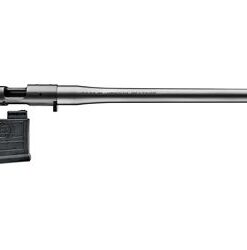 BERGARA B14 .22 LR ED STL 18" 10RD | Order BERGARA B14 .22 LR ED STL 18" 10RD online
BERGARA B14 .22 LR ED STL 18" 10RD | Order BERGARA B14 .22 LR ED STL 18" 10RD online 